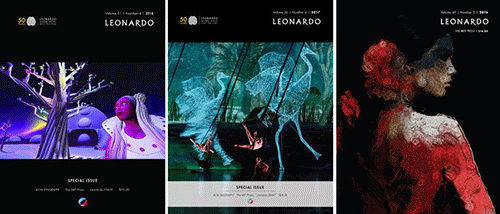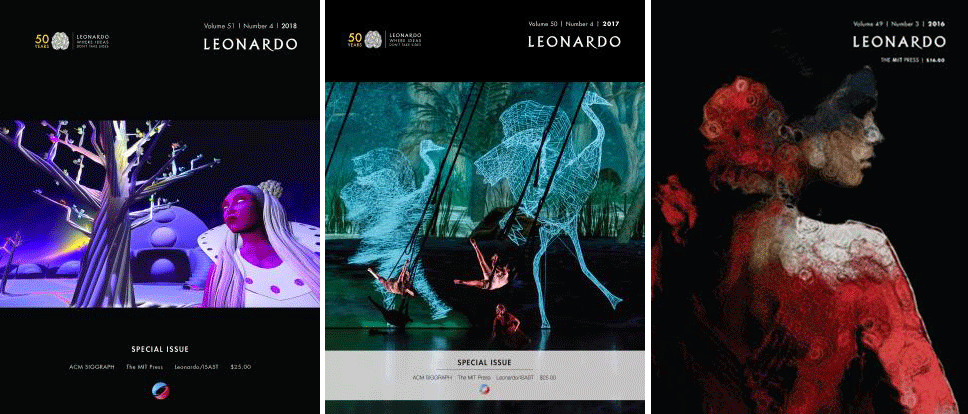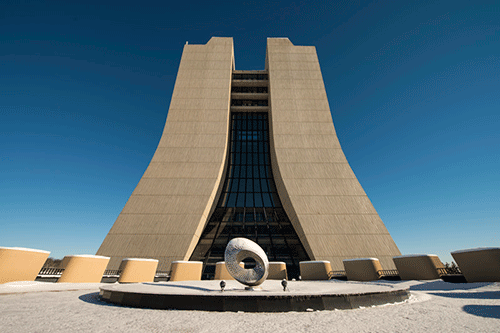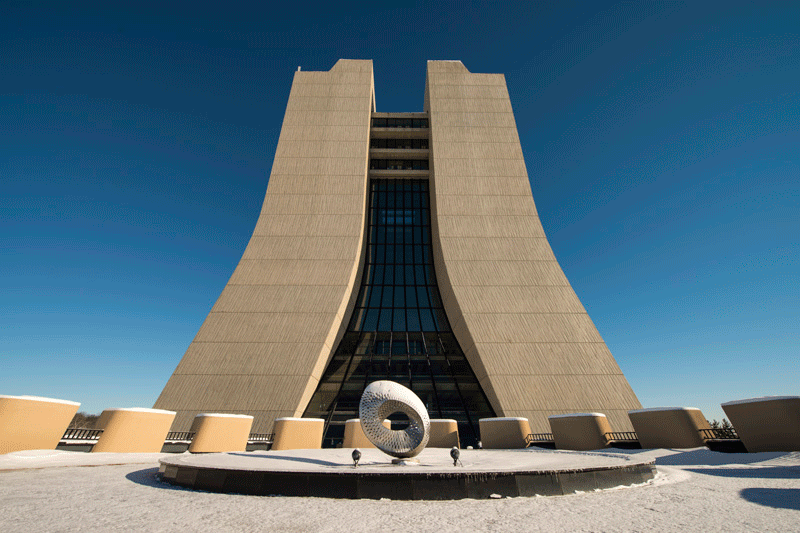Arts & Culture: A Journal for the Polymath
Frank Malina, a leading aeronautical engineer and acclaimed painter, was living in Paris in the late 1960s when he decided the art world needed a new kind of journal. Scientists, he observed, are expected to publicly report their findings, even though they “are no more skilled than artists with the written word.” Moreover, scientists are subject to critique by their peers. Shouldn’t painters, sculptors, and performance artists have a similar forum for their ideas? In 1968, Malina launched the peer-reviewed journal Leonardo for exactly that purpose, naming it after the quintessential Renaissance man who was both artist and inventor.
This year Leonardo turns 50, but middle age hasn’t dulled its avant-garde feel. While initially pitched at artists, the journal has always had a scientific bent, featuring essays about the use of technology or science in the artistic process. In the beginning, the art community had the view of “if you have to plug it in, it can’t be art,” joked Roger Malina, who took over running the journal after his father’s death in 1981. But artists eventually warmed to this mingling of cultures. “I think Leonardo contributed to really changing the arts in the 1960s,” Malina said. The journal now serves a growing community of professionals who straddle the art-science divide.
Increasingly, the journal has also devoted space to the ways that art influences science and technology. This broadening of Leonardo’s scope reflects a “resurgence” in interdisciplinary thinking, said Malina, a physicist and professor of art and technology at the University of Texas, Dallas. He recounted numerous examples that exemplify the shift, such as CERN’s artist-in-residence program, the hiring of artists at tech companies, and the use of graphics to visualize equations and high-dimensional datasets. Then there is the STEM to STEAM movement, which maintains that training in science, technology, engineering, and math should include art as well.
Leonardo’s pages reflect this interdisciplinary culture. But like art, the journal’s content defies a simple description, and appreciating Leonardo takes a prolonged “viewing” of its 50-volume archive spanning five decades. Many essays read like reflections from a dinner party among philosophers, artists, engineers, and scientists, with titles like “The mechanics of creativity,” “Painting with liquid crystals,” “Feminist robotics,” and “Fact and fantasy in nanotech imagery.”
The journal archive also provides a glimpse into the artistic lives of physicists. In a 1982 essay, the French cosmic-ray physicist Pierre Auger described playing with a ball of wax while visiting a Swiss observatory. The feel of that soft, pliable material introduced him to the pleasure of sculpting, and he went on to make several wax pieces, which were later cast in bronze. Auger analyzed his process of making sculptures and found that he proceeded through stages that resemble the steps of scientific discovery. “My experience had led me to the conclusion that science and art can ‘peacefully coexist’ in one’s mind,” he wrote. Sculpture also attracted Robert Rathbun Wilson, the first director of Fermilab, who nearly left physics in the 1960s to be a professional artist. A 2009 Leonardo editorial recounts how Wilson ultimately found an outlet for his artistic passion with the design of Fermilab, which he built to rise majestically out of an Illinois prairie, like one of France’s Gothic cathedrals.
While Leonardo may not be the only journal to offer this special blend of articles, it is one of few, said Philip Moriarty, a physicist at the University of Nottingham in the UK. Moriarty uses scanning probe microscopes to produce images of invisible objects like atoms and molecules, and, in 2012, his Nottingham colleague Brigitte Nerlich, a linguist, invited him to participate in a conference that explored the reality behind scientific imagery. When deciding where to publish conference papers by Moriarty and other presenters, Nerlich said Leonardo was clearly the best choice. “[The journal] has set itself up as the epitome of the [art-science] interface,” she said.
Conducting peer review on papers that connect art with science can have its hiccups. “Typically, we get very conflicting reviews,” Malina said. “Physicists will say, ‘Hold on a second, this is not scientifically accurate.’ And the artists will say, ‘Oh, you think it’s great but it’s artistically boring.’” Artists also work with diverse media, which poses challenges. “Obviously, you can't peer review a video abstract or a podcast in the same way that you peer review a [print] article,” Malina said. In tackling this issue and others, Leonardo has been more than willing to experiment. The journal has, for example, tried double-blind refereeing, translated articles into multiple languages, and taken steps to combat implicit bias in review.
When we spoke, Malina had just returned from an anniversary celebration in Beijing—one of about 30 birthday parties for Leonardo held around the world over the last 12 months. Initially, he’d assumed a huge gathering wouldn’t be possible because of the expense. But celebrations materialized in Chile, Poland, Finland, Columbia, Italy, and South Africa, culminating in a “Convening” in San Francisco in early November. “The whole thing went viral on us,” he said.
–Jessica Thomas
Jessica Thomas is the Editor of Physics.







